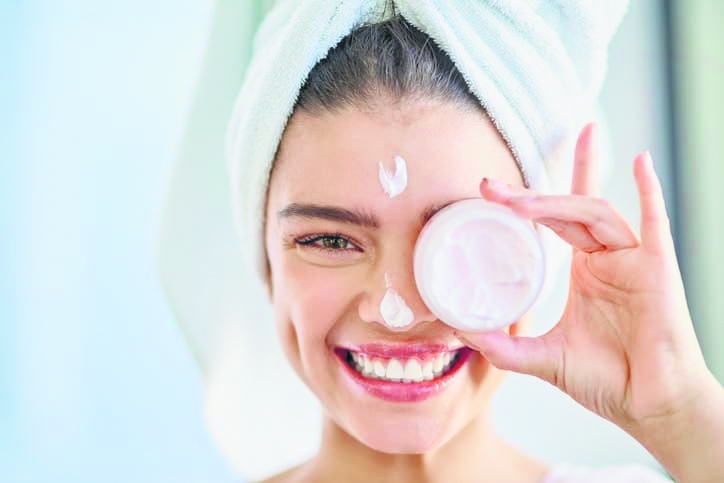I always get surprised when I look back. I have seen beauty standards and skincare practices have evolved significantly. There is a huge difference when you see what skincare means in the 18th or 19th century versus now. It’s not just that there are tons of products and advice available but it’s about reflecting the cultural values, technological advancements, and invention of cosmetics and beauty products in each era. From Greece and Rome to contemporary trends and historical rituals, we have pursued various methods to achieve and maintain healthy and glowing skin. We have seen the evolution of beauty standards and skincare practices throughout history. And, with this, it amazes me how historical beauty rituals continue to influence contemporary trends.
Countries like Egypt, Greece and Rome have always been known as places of beauty, skin care and grooming. Egyptian society placed great importance on cosmetics, which were used by both men and women. The Egyptians used various natural ingredients such as oil, honey and milk for skin care. Massage was also an essential part of their skin care routine.
The Greeks believed that a healthy mind and body were essential for overall well-being. The Greeks used olive oil as a primary skin care ingredient, believing it to have moisturizing and protective properties.
Roman society gave importance to grooming and personal hygiene. Both men and women used cosmetics, perfumes, and hairstyling techniques to enhance their appearance.
Beauty standards during the Middle Ages, 18th and 19th centuries
During the Middle Ages, pale skin was considered superior. What’s more, beauty standards were heavily influenced by religious beliefs, as pale skin at that time was a symbol of purity and virtue. Women used to apply natural ingredients such as honey, milk and herbs for skin care. Whereas, 18th century beauty standards were influenced by the lavish lifestyles of the upper classes, which led to a desire for elaborate hairstyles, powdered wigs, and porcelain-like skin. During the 18th century, there was a growing trend towards smooth, youthful skin. Creams and lotions made from beeswax, rose water and other botanical extracts were applied to the face and body to moisturize and protect the skin.
In the 19th century, known as the Victorian era, beauty standards shifted towards a more modest and natural beauty. Women began to abandon heavy makeup in favor of a more natural appearance.
Skin care regimens during this time often included the use of botanical extracts such as lavender, rose, and chamomile, which are known for their soothing and nourishing properties.
The trend of cold cream also increased in the 19th century. It became popular for cleaning the skin and maintaining moisture.
Early 20th Century Witnessed Significant Changes
The 20th century was the era in which cosmetic science saw the better advancements. Innovations in cosmetic formulation contributed to the development of a diverse range of beauty products, including lipstick, powder, rouge, and mascara. These products were marketed as essential tools to enhance one’s appearance and adhere to fashionable beauty standards. Beauty icons of the early 20th century, such as Hollywood actresses and fashion models, served as influential figures whose glamorous looks were emulated by women around the world. Makeup became a symbol of empowerment and self-expression for women, allowing them to take control of their appearance and present their desired image to the world.
Beauty Ideals Emerged in Late 20th Century
By the middle and end of the 20th century, we had seen many great changes in the world of skin care and beauty. Skin care practices have been significantly influenced by cultural trends and technological advances in this century.
Actresses such as Marilyn Monroe, Audrey Hepburn, and Elizabeth Taylor epitomized beauty and elegance, inspiring women to emulate their fashion, hairstyles, and makeup.
Contemporary Beauty Trends
Body positivity has gained momentum in the 21st century. People showed inclination towards self-love and self-care. This century promoted self-acceptance and challenged societal norms regarding beauty standards. This century saw makeup and skin care brands offer gender neutral and gender exclusive products, believing that everyone deserves access to beauty products that suit their individual preferences and identity.
Influence of Historical Beauty Rituals
Despite the modernization of beauty standards today, many historical beauty rituals still influence contemporary trends. Rooted in cultural traditions and passed down through generations, these ancient practices offer timeless wisdom and natural solutions that resonate with modern consumers seeking authenticity, sustainability, and holistic well-being. Just as ancient civilizations used natural oils and ingredients like jojoba, almond oil and olive oil. Even today, these things are popular due to their nourishing properties. Egyptian beauty rituals included the use of natural ingredients such as honey, milk, and clay for skin care. These ingredients remain popular today for their soothing, exfoliating and purifying benefits.
Both ancient civilizations used aromatic oils and herbs in bathing rituals for their healing and aromatic properties. The tradition of making homemade skin care products using natural ingredients goes back centuries.
While you see the advancement of technology in beauty standards and skin care practices today, you also see the influence of ancient civilizations. Looking at it, it wouldn’t be wrong to say that the evolution of beauty standards and skin care practices throughout history is a testament to the enduring human desire for self-expression, growth, and well-being.

